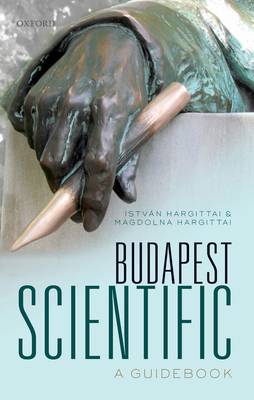
- Retrait gratuit dans votre magasin Club
- 7.000.000 titres dans notre catalogue
- Payer en toute sécurité
- Toujours un magasin près de chez vous
- Retrait gratuit dans votre magasin Club
- 7.000.0000 titres dans notre catalogue
- Payer en toute sécurité
- Toujours un magasin près de chez vous
71,95 €
+ 143 points
Description
This guidebook introduces the reader to the visible memorabilia of science and scientists in Budapest - statues, busts, plaques, buildings, and other artefacts. According to the Hungarian-American Nobel laureate Albert Szent-Gyorgyi, this metropolis at the crossroads of Europe has a special atmosphere of respect for science. It has been the venue of numerous scientific achievements and the cradle, literally, of many individuals who in Hungary, and even more beyond its borders, became world-renowned contributors to science and culture. Six of the eight chapters of the book cover the Hungarian Nobel laureates, the Hungarian Academy of Sciences, the university, the medical school, agricultural sciences, and technology and engineering. One chapter is about selected secondary schools from which seven Nobel laureates (Szent-Gyorgyi, de Hevesy, Wigner, Gabor, Harsanyi, Olah, and Kertesz) and the five "Martians of Science" (von Karman, Szilard, Wigner, von Neumann, and Teller) had graduated. The concluding chapter is devoted to scientist martyrs of the Holocaust. A special feature in surveying Hungarian science is the contributions of scientists that left their homeland before their careers blossomed and made their seminal discoveries elsewhere, especially in Great Britain and the United States. The book covers the memorabilia referring to both emigre scientists and those that remained in Hungary. The discussion is informative and entertaining. The coverage is based on the visible memorabilia, which are not necessarily proportional with achievements. Therefore, there is a caveat that one could not compile a history of science relying solely on the presence of the memorabilia.
Spécifications
Parties prenantes
- Auteur(s) :
- Editeur:
Contenu
- Nombre de pages :
- 368
- Langue:
- Anglais
Caractéristiques
- EAN:
- 9780198719076
- Date de parution :
- 26-05-15
- Format:
- Livre relié
- Format numérique:
- Genaaid
- Dimensions :
- 216 mm x 140 mm
- Poids :
- 612 g

Les avis
Nous publions uniquement les avis qui respectent les conditions requises. Consultez nos conditions pour les avis.






